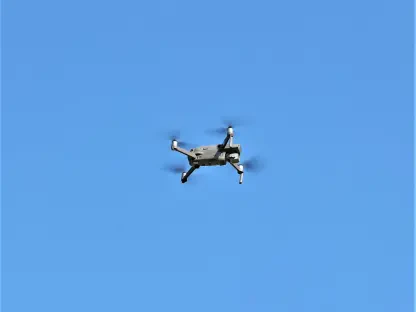As the digital landscape continues to unfold at a breakneck pace, two technologies stand at the forefront: artificial intelligence (AI) and fifth-generation wireless technology (5G). Together, they are reshaping connectivity in profound ways, influencing everything from industry operations to consumer experiences. By exploring insights from experts and industry leaders, this article delves into the exciting potential and challenges that AI and 5G bring to modern connectivity.
The Synergy of AI and 5G: Revolutionizing Connectivity
Industry commentators emphasize that AI’s impact transcends its buzzword status, with practical applications driving innovation across many domains. AI’s ability to process and analyze large volumes of data in real time greatly enhances decision-making processes, a capability that is magnified by 5G’s lightning-fast connectivity. When AI-driven analytics are paired with 5G’s low latency and high capacity, the two form an unparalleled driver for operational efficiency and service innovation.
However, while the potential is vast, there are critical ethical considerations and debates surrounding AI’s application. Issues range from data privacy and security to biases within AI algorithms. Industry leaders stress the importance of establishing robust regulatory frameworks to guide AI deployment responsibly, ensuring that the benefits of AI and 5G reach all without compromising ethical standards.
5G and Its Industry-Wide Impact
5G technology is widely recognized as a catalyst for change, bringing unprecedented speed and connectivity to myriad sectors. In manufacturing, 5G enables more efficient production processes and real-time monitoring, which helps optimize operational efficiencies. The healthcare sector stands to gain immensely as well, with telemedicine and remote monitoring becoming more viable than ever, ushering in more equitable access to medical services.
Nevertheless, rolling out 5G infrastructure poses its challenges. Developing and maintaining the necessary equipment requires significant investment, and regulatory hurdles can complicate implementation. Understanding these hurdles and exploring viable solutions is crucial for stakeholders aiming to make the most of the 5G revolution.
Embracing Collaborative Infrastructure and Global Connectivity
The introduction of neutral host networks exemplifies innovative approaches toward enhancing connectivity. By allowing multiple carriers to share infrastructure, these networks offer a practical solution for reducing costs and improving service coverage. Collaborations in sectors such as manufacturing and oil have demonstrated the practicality and potential growth opportunities in healthcare and education.
Connectivity advancements, however, differ by region due to variations in technological infrastructure and economic capabilities. Areas lagging in development must adopt adaptive strategies to bridge gaps and ensure that the benefits of improved connectivity are evenly distributed on a global scale. Busting myths surrounding 5G and AI could foster greater acceptance and usage, as real-world results continue to challenge preconceived notions.
Converging Technologies and Future Prospects
There is a growing trend of converging wired and wireless technologies, leading to more cost-effective and robust services. Industry experts predict that combining these technologies will enhance customer satisfaction and retention through seamless integration. As AI, 5G, and other emergent technologies converge, the potential for innovation remains vast.
Exploring future trends and speculations, experts foresee transformative advancements, with the possibility of new breakthroughs in how businesses and consumers interact with digital networks. This evolving landscape suggests an exciting trajectory as industries and societies adapt to an ever-connected future.
Looking Forward: Shaping Tomorrow’s Connectivity
Key insights highlight the importance of adapting to evolving technologies and leveraging them for maximum benefit. Successful navigation of the landscape requires strategic foresight and adaptability, ensuring businesses and individuals remain agile amid rapid technological advancements. There is also a clear need for ongoing dialogue on practical applications, illustrating how theoretical concepts can impact everyday life and operations practically and tangibly.
The path forward involves not only recognizing the enduring significance of AI and 5G but also charting new territories in connectivity innovation responsibly. A framework for sustainable and inclusive technology adoption will be pivotal as these technologies continue to redefine boundaries, create new possibilities, and enable a connected world like never before.









